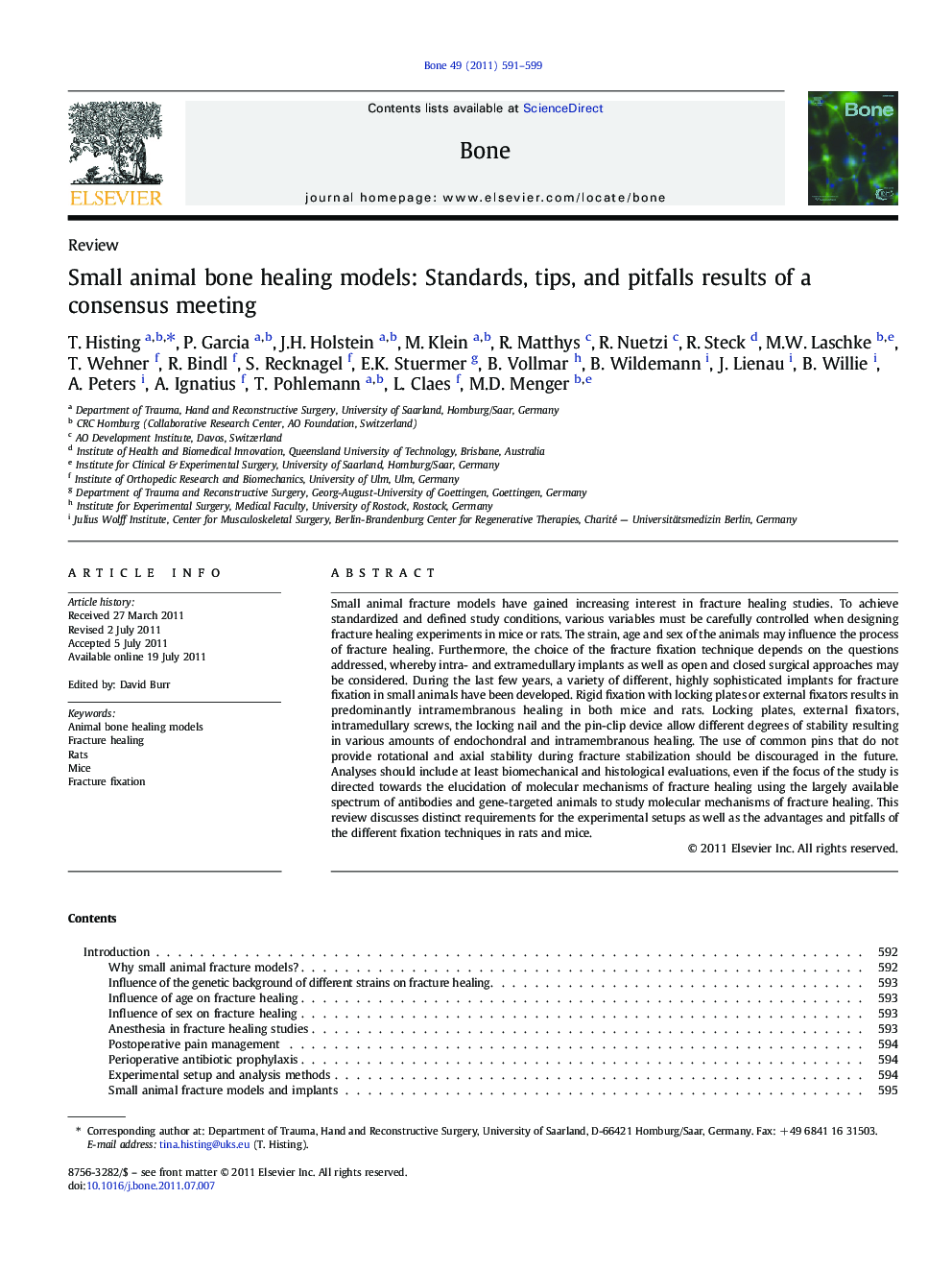| کد مقاله | کد نشریه | سال انتشار | مقاله انگلیسی | نسخه تمام متن |
|---|---|---|---|---|
| 5891695 | 1153280 | 2011 | 9 صفحه PDF | دانلود رایگان |

Small animal fracture models have gained increasing interest in fracture healing studies. To achieve standardized and defined study conditions, various variables must be carefully controlled when designing fracture healing experiments in mice or rats. The strain, age and sex of the animals may influence the process of fracture healing. Furthermore, the choice of the fracture fixation technique depends on the questions addressed, whereby intra- and extramedullary implants as well as open and closed surgical approaches may be considered. During the last few years, a variety of different, highly sophisticated implants for fracture fixation in small animals have been developed. Rigid fixation with locking plates or external fixators results in predominantly intramembranous healing in both mice and rats. Locking plates, external fixators, intramedullary screws, the locking nail and the pin-clip device allow different degrees of stability resulting in various amounts of endochondral and intramembranous healing. The use of common pins that do not provide rotational and axial stability during fracture stabilization should be discouraged in the future. Analyses should include at least biomechanical and histological evaluations, even if the focus of the study is directed towards the elucidation of molecular mechanisms of fracture healing using the largely available spectrum of antibodies and gene-targeted animals to study molecular mechanisms of fracture healing. This review discusses distinct requirements for the experimental setups as well as the advantages and pitfalls of the different fixation techniques in rats and mice.
⺠The strain, age and sex of the animals, but also anesthetics, analgesics and antibiotics influence bone healing. ⺠Locking plates, external fixators, intramedullary screws and nails allow different degrees of stability for fracture fixation. ⺠Common pins do not provide rotational and axial stability and, thus, may not be ideal for studying fracture healing. ⺠Implants for open fracture models can be used to study healing of segmental bone defects. ⺠The standards given in this review will help researchers to perform in vivo bone healing experiments.
Journal: Bone - Volume 49, Issue 4, October 2011, Pages 591-599